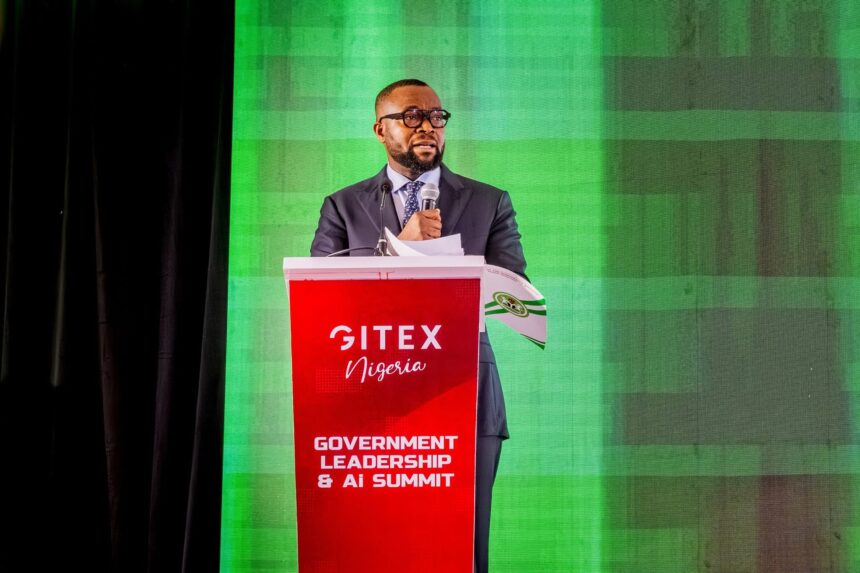At the GITEX technology summit in Abuja, Nigeria reaffirmed its ambition to become a leader in artificial intelligence (AI) with the unveiling of plans for a multilingual large language AI model (LLM) capable of processing indigenous languages.
The initiative, unveiled on Monday September 1, 2025, is spearheaded by Dr. Bosun Tijani, Minister of Communications, Innovation, and Digital Economy.
According to the Minister, unlike most AI models trained exclusively on English or other global languages, Nigeria’s LLM will incorporate five indigenous languages alongside accented English.
“When I came in, I was extremely bullish about the fact that the only way for Nigeria would be to have our own foundational model,” Tijani said at the panel session. “We opted to kick off a multilingual large language model for the country, covering about five of our languages. We’ve done significantly well in collecting the data.”
What You Should Know
Languages such as Yoruba, Hausa, Igbo, and Tiv, spoken by tens of millions, remain largely absent from global AI systems. By prioritising them, the Minister says, Nigeria hopes not only to preserve cultural identity but also to make digital services more relevant and accessible to local populations.
The project is being developed by the National Information Technology Development Agency (NITDA) through its National Centre for Artificial Intelligence and Robotics (NCAIR), in collaboration with Lagos-based AI startup Awarri and global technology partner DataDotOrg.
With a population of over 200 million people and more than 500 spoken languages, policymakers say tailoring AI to Nigeria’s linguistic realities is both a cultural necessity and a strategic advantage.
What This Means
Tijani acknowledges that building a large-scale AI model requires immense computing power, scientific expertise, and reliable funding, resources that remain scarce in Nigeria.
“The reality is that the cost of building the scientific know-how that is required, and also the geopolitics around it, is something that leaders like myself are struggling with,” he said.
He cited India’s example, where sovereign LLMs such as Sarvam were built for local languages while still encouraging community participation and external collaboration.
Nigeria, he suggested, may have to adopt a similar hybrid approach, blending proprietary development with open-source contributions.
Understanding the Nigeria’s National AI Strategy
The multilingual LLM is a core component of Nigeria’s broader National AI Strategy, which has been in development since 2024.
According to reports, Lagos Business School is driving education and research; the Centre for Justice and Legal Development (CJLD) is focusing on civil society and media; while Data Science Nigeria is nurturing startups and the technical ecosystem.
The Nigeria’s government Three Million Technical Talent (3MTT) program is also aligning thousands of fellows with the LLM project. More than 7,000 are expected to contribute directly, creating both a skilled workforce and a practical learning platform.
Beyond technical training, policymakers and civil servants are also being introduced to AI fundamentals. Lagos Business School has hosted workshops for ministry directors on issues such as intellectual property, ethics, and governance.
Funding, Partnerships, and Impact
The LLM project currently has $3.5 million in seed funding from a mix of global and local partners, including the UNDP, UNESCO, Meta, Google, and Microsoft. But Tijani admits that long-term reliance on donors is unsustainable.
“For the government to actually invest millions of dollars into those things, where is the money going to come from? That’s the conflict we need to handle,” he said.
If successful, the model’s impact could be transformative. Experts say Indigenous-language AI could support education in rural areas, enable traders and small business owners to access digital tools in familiar dialects, and bridge cultural divides.
Africa’s Race for AI Sovereignty
According to a Statista report, Africa’s AI market is expected to reach $4.51 billion in 2025, and is expected to show an annual growth rate (CAGR 2025-2031) of 26.27%, resulting in a market volume of $18.27 billion by 2031.
Nigeria is not alone in seeing local-language AI as a matter of inclusion. Across Africa, governments and startups are experimenting with models adapted to cultural and linguistic diversity.
The Ethiopian AI Institute is developing models that can process Amharic and other Cushitic languages. Kenya has positioned itself as an AI hub, with startups like Afrika AI working on Swahili-focused NLP tools. South Africa is also pushing for neural machine translation models covering Zulu, Xhosa, and Sesotho.
Industry leaders say this AI ambitions could become a template for other African countries grappling with the dual challenge of technological innovation and cultural preservation.
Talking Points
It is significant that Nigeria is developing a multilingual large language AI model (LLM) tailored to indigenous languages, addressing the long-standing digital exclusion of millions who do not use English as their primary language.
This move positions Nigeria not just as a consumer of global AI technologies, but as a creator of foundational AI infrastructure that reflects its own cultural and linguistic realities.
At Techparley, we see how a project like this can redefine access to education, healthcare, and government services by making digital tools usable in the languages people actually speak at home and in the marketplace.
The integration of indigenous languages into AI systems also has symbolic weight, it affirms cultural identity while opening practical doors for local entrepreneurs, students, and rural communities who are often left behind in digital innovation.
However, execution remains a challenge. Building a large-scale AI model requires sustained funding, computing resources, and governance frameworks. Without long-term investment and political will, the initiative risks stalling at pilot stage.
Adoption will also depend on how well the model is integrated into real-world services—from classrooms and clinics to banking apps and public platforms. Without strong local applications, it may remain an academic exercise.





